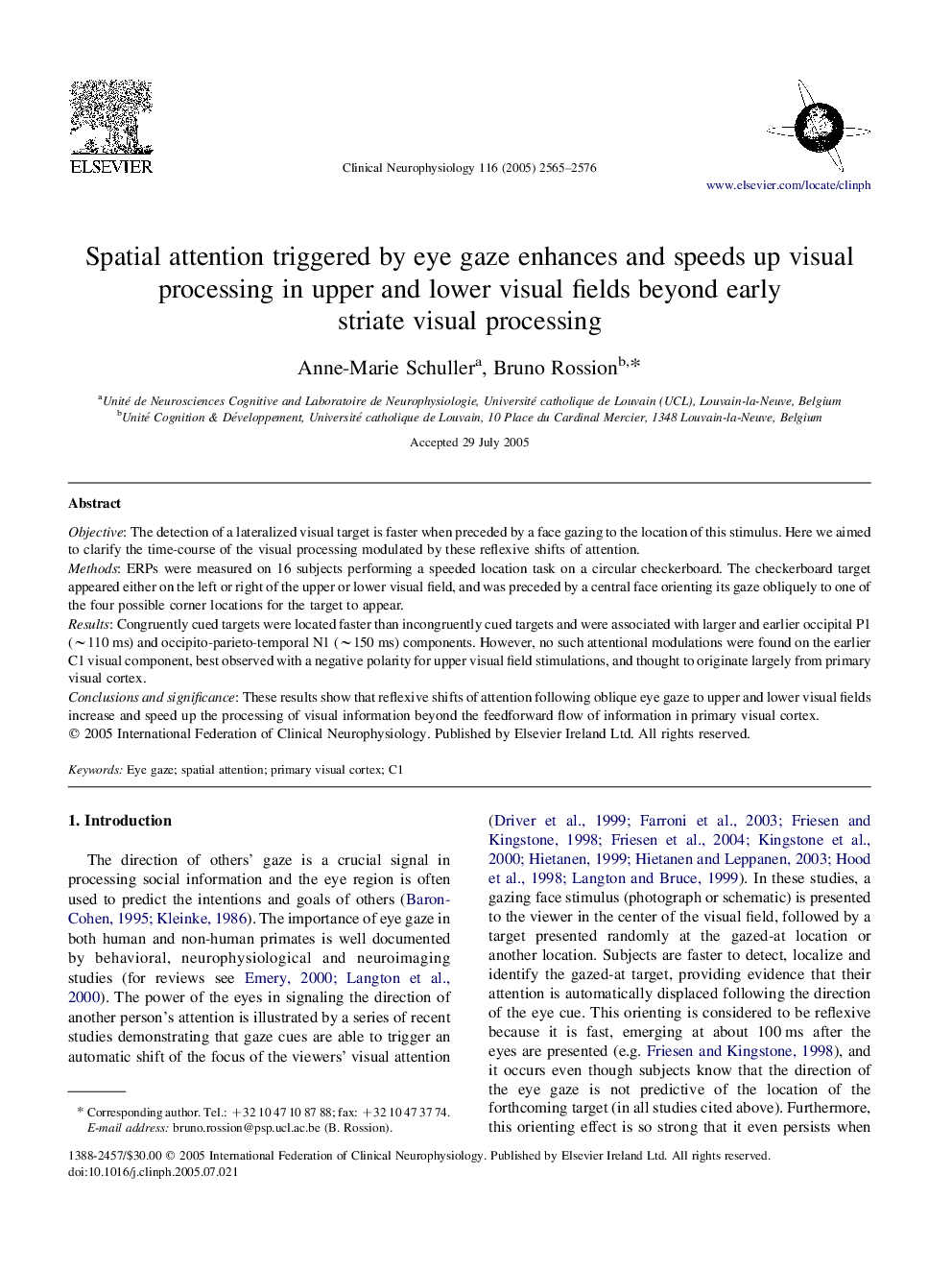| Article ID | Journal | Published Year | Pages | File Type |
|---|---|---|---|---|
| 3048703 | Clinical Neurophysiology | 2005 | 12 Pages |
ObjectiveThe detection of a lateralized visual target is faster when preceded by a face gazing to the location of this stimulus. Here we aimed to clarify the time-course of the visual processing modulated by these reflexive shifts of attention.MethodsERPs were measured on 16 subjects performing a speeded location task on a circular checkerboard. The checkerboard target appeared either on the left or right of the upper or lower visual field, and was preceded by a central face orienting its gaze obliquely to one of the four possible corner locations for the target to appear.ResultsCongruently cued targets were located faster than incongruently cued targets and were associated with larger and earlier occipital P1 (∼110 ms) and occipito-parieto-temporal N1 (∼150 ms) components. However, no such attentional modulations were found on the earlier C1 visual component, best observed with a negative polarity for upper visual field stimulations, and thought to originate largely from primary visual cortex.Conclusions and significanceThese results show that reflexive shifts of attention following oblique eye gaze to upper and lower visual fields increase and speed up the processing of visual information beyond the feedforward flow of information in primary visual cortex.
